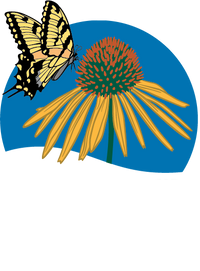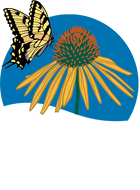



Amsonia tabernaemontana - eastern bluestar


![]()

DESCRIPTION
eastern bluestar
Amsonia tabernaemontana
A butterfly magnet with light blue star-shaped blooms in spring attracts butterflies and other pollinators. After the flower show, prune back to the stems by 1/2 to encourage fresh growth, making a great backdrop for summer color. Eastern bluestar can get leggy in the shade and may require staking, but it is still worth it for that added woodland bloom! Well adaptable to moist locations in both sun or partially shaded areas and also shows drought resistance in shaded areas. Bluestar attracts pollinators in spring and lights up the fall garden with brilliant yellow foliage color.
Benefits
- Thrives in shadier locations and rain gardens
- Perfect for massing in the middle of any garden
- Superb texture and brilliant fall foliage color
- Easy to grow with a pleasing rounded form
- Native pollinators love it!
NATIVE INFO
Native Range

Native range derived from The Biota of North America
INTERESTING FACTS
The genus Amsonia was named after Dr. John Amson, an English physician and amateur botanist who lived during the colonial period in Williamsburg, Virginia. Dr. Amson had an interest in botany, which was common among physicians of his time since plants were often used for medicinal purposes.
GROWING TIPS
Best in average, well-drained soils in full sun to partially shaded location.
Mature Size: 2-3' T x 2-3' W
Hardiness Zone: 3-9
Sun Exposure: Full sun to part shade
American Beauties Offer Solution Based Plant Collections to Help you Choose
Quick Tips for Choosing Plants:
- Planting a variety of native trees, shrubs, perennials and vines increases biodiversity and gives wildlife a source for food, cover and nesting
- Choose a mixture of deciduous and evergreen trees so birds and other wildlife will always be able to find shelter
- Plant trees and large shrubs where they will block winter winds from the house and shade it in summer, that will save energy and lower your carbon footprint
- Try your best to buy plants that were grown locally, your independent garden center will be your best bet
- Think about ultimate height and width of the plant you choose, make sure it will fit the space you have for it when it's reached maturity
- Plant nectar plants in groups, to attract butterflies and other beneficial insects more easily
- Ask for help if you need it. Most garden centers either have a landscape designer on staff or they can give you a reference of a designer that is adept at native plant wildlife gardening. There will be upfront costs but they are small when compared to having to redo a landscape that wasn't what you really wanted
Our Plant Tags Hold the Secrets to Success
Choosing the right plants for your garden can seem like a daunting task but we’re here to help. Our horticulturists have spent a considerable amount of time researching and writing our beautiful, American Beauties plant tags to help you be successful. First of all, when you see an American Beauties branded pot at your garden center you can be confident that the plant is native to your area and a responsible choice.
When you look at our tag you’ll find information about the plants natural habitat. That will give you a clue to how it will work in your backyard. For instance if the plant is naturally founded and moist, shade and you have full sun, it’s not the plant for you. The “Features” section gives you an overview or plant description so you’ll know what to expect. While the “Benefits” section talks about the plants strong suits and how the plant will benefit wildlife.
A Special Note About Exposure
Full sun: Prefers six or more hours of direct sunshine a day
Partial shade: Thrives in three to six hours of daily sunshine
Shade: Generally does well with less than three hours of sun per day. Having said that even shade loving plants will struggle in extremely deep shade.
DOWNLOADABLE RESOURCES
Best Plants for Bees - Double sided printout for download
Best Plants for Butterflies - Double sided printout for download



